SUMMARY
This is AI generated summarization, which may have errors. For context, always refer to the full article.
![[Vantage Point] Tempest at the ports (Part 1)](https://www.rappler.com/tachyon/2022/11/Philippines-Dependence-on-Foreign-Trade-and-Investments-Imports.jpg)
Read Part 2.
Economic development starts at the ports. Since time immemorial, they’ve been helping crank the wheels of global commerce. Without them, intercontinental trade, the transport of raw materials, and the importation and exportation of food and manufactured goods would be non-existent.
Globalization has heightened the significance of seaports in the global supply chain. Seaports are not just for cargo handling or passenger transport. Logistics service provision in an international context has become a core part of the business.
According to the United Nations Conference on Trade and Development (UNCTAD), international maritime operations form part of more than 80% of global trade by volume, with more than 70% of its value carried on board ships and handled by seaports worldwide. Many companies benefit from them in expanding new markets for their products. They have also acted as ‘funnels’ for economic development by directing money and resources into specific sectors and corridors.
In the Philippines, ports have also unfortunately become a sought-after venue for those who want to get rich quickly. Those in the know will tell you how rampant corruption has permeated into every corner of the edifice where the ports nestle. Urban legend has it that even low-salaried port and customs employees own luxury car brands.
Smuggling, corruption, port congestion, and humongous traffic in areas where cargo trucks traverse have all chipped off a large chunk of income that the national coffers should have derived from port operations. Previous governments had effected ad hoc solutions in addressing these problems, but the costly measures they implemented all fell short of the desired results.
On August 23, 1991, the country engaged Geneva-based Société Générale de Surveillance S.A. (“SGS”) for comprehensive import supervision services. The SGS was to provide specialized services to assist in improving the country’s customs clearance and control processes in order to ultimately address widespread smuggling.
The country’s business relationship with SGS soured and ended in a costly arbitration with the Swiss firm asking for $140 million in unpaid sums under the contract. SGS claimed that the Philippines arbitrarily ended the contract in 2000 (but that is an entirely different story).
In 2014, then-Manila Mayor Joseph Ejercito Estrada implemented a truck ban to ease traffic congestion, but was forced to lift it soon after when the move proved to do more harm than good.
The Duterte solution
In mid-2021, the Philippine Ports Authority (PPA) issued Administrative Order (AO) No. 04-2021 requiring foreign containers to register in the agency’s Trusted Operator Program-Container Registry and Monitoring System (TOP-CRMS). PPA assistant general manager for finance and administration Elmer Nonnatus Cadano said the TOP-CRMS is “part of the port authority’s efforts to digitalize processes and aims to further make port operations efficient and prevent port congestion.” He explained that the system is also part of the PPA’s campaign against smuggling, by helping “the Bureau of Customs (BOC) enforce its 90-day policy for re-exporting foreign containers.”
In April last year, lone bidder local blockchain-based logistics joint venture company Shiptek Solutions Corp., NextIX, Inc. and Union Bank won the P900-million procurement contract for TOP-CRMS and Empty Container Storage Shared Service Facility.
The PPA’s objective is undoubtedly lofty, but is it well within its jurisdiction to monitor the movement of containers that pass through international ports handling containerized cargo? Doesn’t the monitoring fall under the mandate of the Cebu Ports Authority, Cagayan Economic Zone Authority, Poro Point Management Corporation, Subic Bay Metropolitan Authority, PHIVIDEC Industrial Authority and Regional Ports Management Authority?
No wonder business groups are up in arms against this latest attempt to presumably put order to dysfunctional ports operations. The key points of disagreement are: requirement for container insurance; system redundancy; additional registration and procedures, and added costs.
Industry players unite
On January 10, around 14 industry associations and organizations issued a joint manifesto titled “United Call to Revoke PPA Administrative Order No. 04-2021,” citing the policy’s potential negative impact on port operations and the economy, and claiming that it has no legal basis and contradicts ease of doing business and trade facilitation.
Among the manifesto signatories were: Philippine Chamber of Commerce and Industry president George T. Barcelon; Philippine Exporters Confederation Inc. president Sergio R. Ortiz Jr.; Alliance of Concerned Truck Owners and Organization director and external affairs officer Ricardo Papa II; Alliance of Container Yard Operators of the Philippines chairman Roger C. Lalu; and, Association of International Shipping Lines, Inc. president Patrick G. Ronas.
According to the manifesto, the “undersigned, in consultation with various stakeholders and port users, vehemently call for the immediate revocation of PPA Administrative Order No. 04-2021 (“PPA AO-04-2021″), … the Trusted Operator Program – Container Registry Monitoring System (“TOP-CRMS”) and Empty Container Storage Shared Service Facility (“ECSSSF”), and all similar measures that have the potential to negatively impact port operations and disrupt the delicate balance of commerce at the port…”
Stakeholders also claimed that TOP-CRMS negates the administration’s push to facilitate doing business and lower logistics costs. Supply Chain Management Association of the Philippines executive director Corazon Curay believes the system “does not (add) value,” but only adds to cost and processes.
Salient points of industry opposition
Following are the key points the policy opponents raised in the manifesto:
*One of the objectives of PPA AO No. 04-2021 is to provide a real-time monitoring of the location, status and movement of containers from the time the container is discharged from the vessel up to the time the same container is loaded for export. This task is already being done by the Bureau of Customs which has institutionalized its own monitoring policy under Customs Administrative Order No 08-2019 and has been in effect since August 2019. The involvement of the Philippine Ports Authority using TOP-CRMS is an unnecessary redundancy outside of PPA’s own scope of responsibilities.
*PPA disregarded all the foregoing legal requirements and best practices when it issued AO-04-2021 on September 22, 2021. PPA-AO-04-2021 violates the Philippine Competition Act and President Duterte’s Administrative Order No. 44, Series of 2021 (a.k.a. the National Competition Policy)
*The Terms of Reference for TOP-CRMS & ECSSSF requiring truckers and other service providers to register under one system which would then nominate and assign them to the individual transactions (i.e. empty reposition) demolishes the autonomy of shipping lines to negotiate, manage and monitor their current and prospective vendors. This feature in the proposed system creates a monopoly where multiple service providers are at the mercy of the winning bidder for TOP- CRMS, violating the Philippine Competition Act.”
Meat industry chimes in
On December 28, 2022, the Philippine Association of Meat Processors Inc. (PAMPI) also aired its indignation to Department of Transportation (DOTr) Secretary Jaime Bautista, since the PPA is under the DOTr. In a letter, PAMPI president Felix O. TiukInhoy Jr. and vice president Jerome Ong assailed AO No. 04 which requires importers to pay for the registration and monitoring of containers.
“The AO imposes an additional unjustifiable financial burden on our industry already battered by spiraling cost of raw materials, freight and a broken supply chain,” the two PAMPI officials said, calling the issuance of AO 4-2021 as “grave abuse of authority.”
Containers are owned by shipping lines, not by importers, they reasoned out, and the use of containers is paid to shipping lines by importers as part of freight costs. Requiring importers to pay PPA “for watching/monitoring containers which do not belong to them, is unwarranted and abusive.”
I believe that a more well-thought-out solution, devoid of suspicion, is what the industry needs. We’ve witnessed the failure of past administrations in addressing the same problems and any solution put forth moving forward should be legally and financially palatable to stakeholders.
On the issue of road congestion exacerbated by cargo trucks plying the same route as public and private vehicles, even the most sophisticated tracking device attached on every container trucks, cannot widen the narrow roads where every vehicle runs.
Perhaps the government should consider the 2016 proposal of the Japan International Cooperation Agency (JICA) to transfer operations of the Port of Manila to the Batangas International Port, since most of the domestic shipping done in the country comes from the South of Manila. In JICA’s estimate, operating costs would be relatively lower if vessels were docked in Batangas City.
Why has the government seem oblivious to JICA’s proposal? What is keeping it from doing something sensible for a change, to improve our country’s maritime industry? What gives? – Rappler.com
Val A. Villanueva is a veteran business journalist. He was a former business editor of the Philippine Star and the Gokongwei-owned Manila Times. For comments, suggestions email him at mvala.v@gmail.com.
Add a comment
How does this make you feel?
![[WATCH] Bamban POGO scandal: There’s a bigger fish than Alice Guo](https://www.rappler.com/tachyon/2024/07/inside-track-tcard-bamban-pogo.jpg?resize=257%2C257&crop=435px%2C0px%2C1080px%2C1080px)
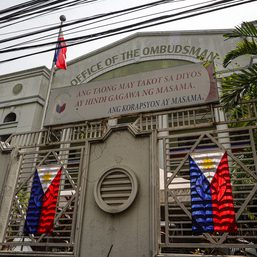
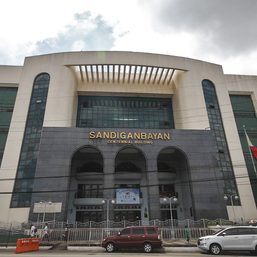

![[OPINION] What kind of citizens are we?](https://www.rappler.com/tachyon/2024/07/tl-what-kind-of-citizen-are-we.jpg?resize=257%2C257&crop=333px%2C0px%2C1080px%2C1080px)
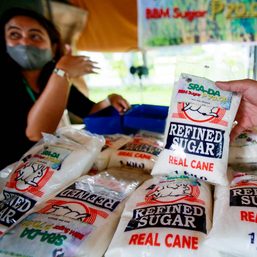
![[Vantage Point] Sugar mess gets messier (Part 2)](https://www.rappler.com/tachyon/2023/04/Sugar-mess-April-1-2023-f.jpg?resize=257%2C257&crop=304px%2C0px%2C720px%2C720px)
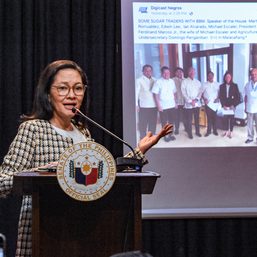
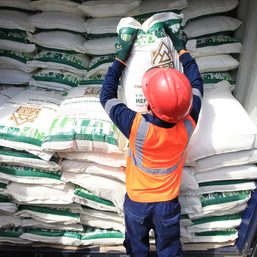
![[Vantage Point] Sugar mess gets messier](https://www.rappler.com/tachyon/2023/03/sugar-smuggling-march-21-2023.jpg?resize=257%2C257&crop=378px%2C0px%2C1080px%2C1080px)

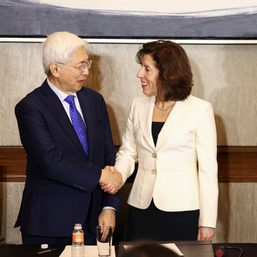
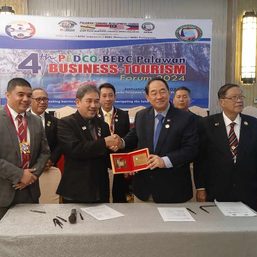
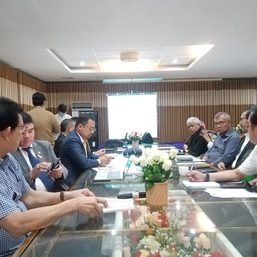

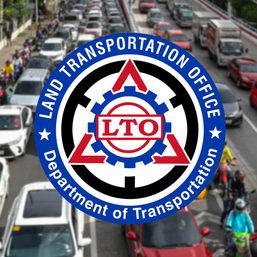
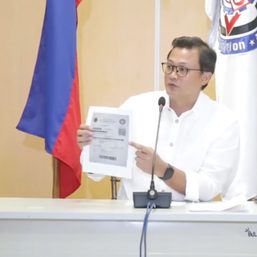
![[Ask the Tax Whiz] What are the guidelines for online registration with the Central Business Portal? (Part 2)](https://www.rappler.com/tachyon/2022/10/system-integration.jpg?resize=257%2C257&crop=216px%2C0px%2C900px%2C900px)
![[Ask the Tax Whiz] How will the Central Business Portal be implemented in the Philippines (Part 1)](https://www.rappler.com/tachyon/2022/10/hub-integration.jpg?resize=257%2C257&crop_strategy=attention)
There are no comments yet. Add your comment to start the conversation.